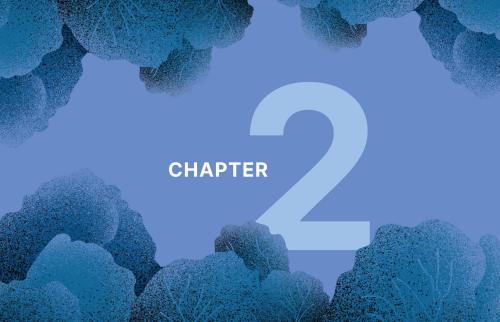EXECUTIVE SUMMARY
Fragile states present one of the greatest challenges to global development and poverty reduction. Despite much new learning that has emerged from within the development community in recent years, understanding of how to address fragility remains modest. There is growing recognition that donor engagement in fragile states must look beyond the confines of the traditional aid effectiveness agenda if it is to achieve its intended objectives, which include statebuilding, meeting the needs of citizens, and managing risk more effectively. Current approaches are constrained by relying heavily on small-scale interventions, are weakened by poor coordination and volatility, and struggle to promote an appropriate role for the recipient state.
Scaling up (i.e., the expansion, replication, adaption and sustaining of successful policies and programs in space and over time to reach a greater number of people) is highly relevant to fragile settings, both as an objective and as a strategic approach to development. As an objective, it reinforces the logic that the scale of the challenges in fragile states demands interventions that are commensurate in purpose and equal to the task. As a strategy, it encourages donors to identify and leverage successes, and to integrate institutional development more explicitly into projects and programs. In addition, scaling up can assist donors in addressing the priority areas of improved project design and implementation, sustainability and effective risk management.
Successful scaling up in fragile states almost certainly occurs less often than is possible and does not always involve a systematic approach. Donors should therefore look to more systematically pursue scaling up in fragile states and evaluate their performance with specific reference to this objective. This can be done by incorporating relevant elements of a scaling up framework into operational policies, from strategy development through to program design and monitoring.
Contrary to expectations, there are compelling examples of successful scaling up in fragile states. While the conditions prevailing in fragile states create serious obstacles in terms of “drivers” (the forces that push the scaling up process forward) and “spaces” (the opportunities that need to be created, or potential obstacles that need to be removed for interventions to grow), and in terms of the operational modalities of donors, these can be overcome through the careful design and delivery of programs with a clear focus on creating scaling up pathways, and through close partnership and sustained engagement of governments, communities and foreign partners.
Case study evidence suggests that the pathways taken to reach scale in fragile states demand different approaches by donors. Donors need to adopt greater selectivity in determining which areas or sectors for scaling up are justified—a strategy that has also assisted some donors in managing risk. More investment and time are required in upfront analysis and building the evidence for successful scaling up pathways. In some cases, donors require longer time horizons to achieve scale, although demand from government or beneficiaries has sometimes forced donors to move immediately to scale, allowing little or no time for piloting. Regardless of the pace of scaling up, donors that were most successful were engaged early and then remained engaged, often far beyond the replication phase of scaling up, to increase the likelihood of interventions being sustained. Other common characteristics of successful scaling up were simple project design and a focus on the institutional aspects of the scaling up pathway.
Case studies also point to the crucial role of drivers in moving the scaling up process forward in fragile states. Proven ideas and practical models have often been picked up in fragile states, contrary to the expectation that actors may be less responsive to recognizing and acting on the utility of promising results. Leaders undoubtedly have a role to play in supporting scaling up, although there are clear dangers that must be avoided, including avoiding the perception that donors are picking (political) winners by nominating leaders, and tying the survival of projects too closely to the fortunes of a leader’s political career. Incentives were found to be one of the most important drivers in fragile states, and there is a good case to be made for donors introducing new inducements, greater transparency or similar reforms to strengthen the role incentives play. Finally, and in contrast to the standard scaling up framework, community demand was found to be an important driver in many fragile states, both in demanding the expansion of small-scale projects and by facilitating the community’s own resources to support the scaling up process.
The greatest challenge to scaling up in fragile states is the limited spaces these environments provide. This is especially the case in respect to those spaces which concern aspects of governance: political, institutional and policy spaces. When working in fragile states, donors must recognize that spaces for scaling up are almost always more constrained, but look for ways to expand upon them. Some of the most successful examples of scaling up used creative approaches to build space quickly or used existing capacity to the fullest possible extent. Also relevant are the lessons of robust analysis, greater realism and cost control. The case studies confirm the importance of two additional spaces in fragile states. For example, security space often imposed horizontal obstacles to scaling up which could not realistically be overcome while ownership space served as a good indication of the perceived legitimacy of the scaling up process and the likelihood that interventions would be sustained longer term.
Case studies also affirm the importance of emphasizing robust project design and implementation, and the close linkages between the scaling up agenda and the role of risk management and sustainability in fragile states. While sustainability presented a significant problem for many of the projects and programs reviewed, a more focused approach around scaling up may assist donors in addressing sustainability concerns. This would entail adopting a longer-term perspective beyond the immediate confines of any individual project, looking for available drivers and supportive spaces, and focusing on effective implementation and consistent monitoring and evaluation (M&E). Any intervention introduced on a small scale that scores well in sustainability serves as a possible candidate for scaling up.
Similarly, many of the methods used by donors for managing risk—an emphasis on analysis, scenario planning, realism and making use of specialized aid instruments—are equally relevant for supporting scaling up in fragile countries. A persuasive argument can be made that the adoption of a more explicit scaling up approach by donors can form part of a risk management strategy in fragile states. Scaling up can enable donors to more ambitiously tackle development risks without allowing institutional and project risks to grow unchecked. Ultimately, a donor approach that combines good risk management and scaling up requires strong leadership and well-aligned incentives.




